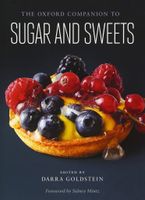Advertisement
Unleavened Dough
Published 2015
The simplest type of fried dough is produced by frying unleavened dough. A Chinese example of this technique is jian dui, deep-fried sesame-seed-covered balls of glutinous rice flour that gain a hollow interior from the dough’s expansion. A rather different form of unleavened fried dough is made by thinly rolling out a relatively stiff dough and cutting it into strips or other shapes. These strips can be folded, braided, or even formed into loose balls, as in the case of Schneebälle (“snowballs”) from Rothenburg, Germany. Once fried, the dough can be sweetened by dusting with powdered sugar or dipping in honey or syrup. There are many regional names for this type of fried dough, including pestiños in Andalusia, cenci in Italy, merveilles in Southwest France, origliettas in Sardinia, and boží milosti in the Czech Republic. Modern recipes for fried dough strips can include chemical leavening agents. See chemical leaveners. Though the addition of a leavening agent is not strictly required, it will produce a lighter product with an open texture, such as Latin American sopaipillas and Slovak fánky.


